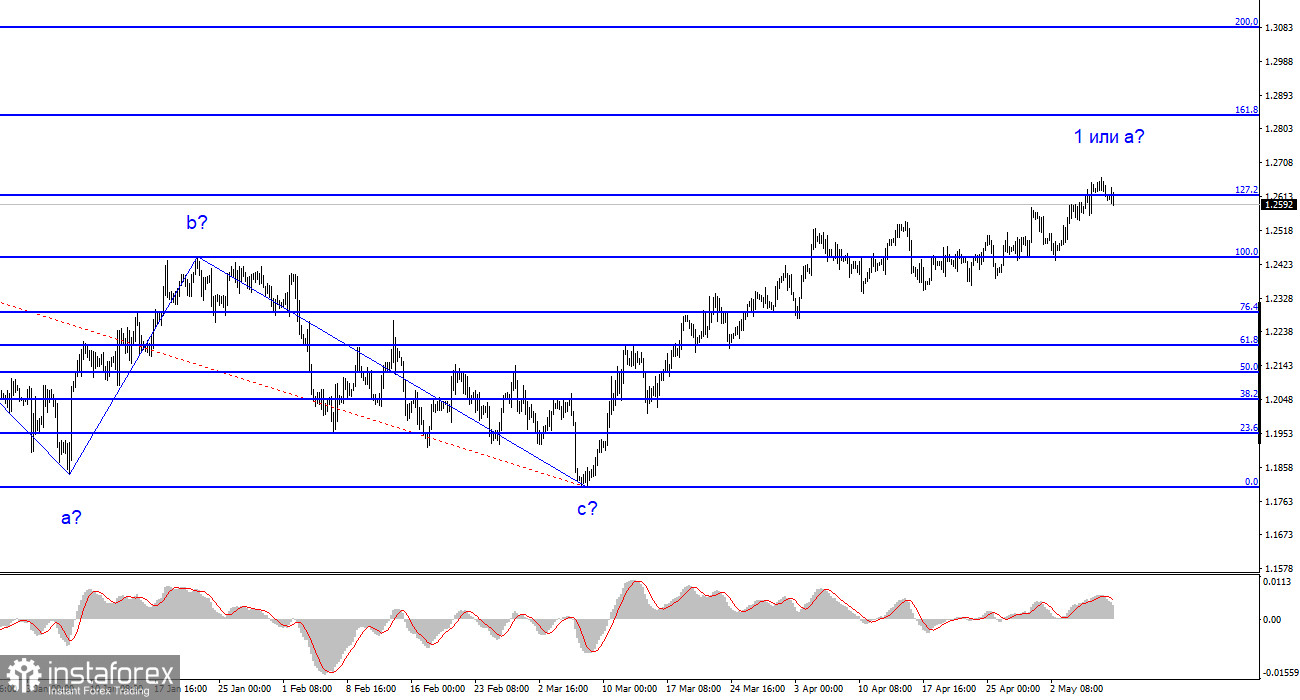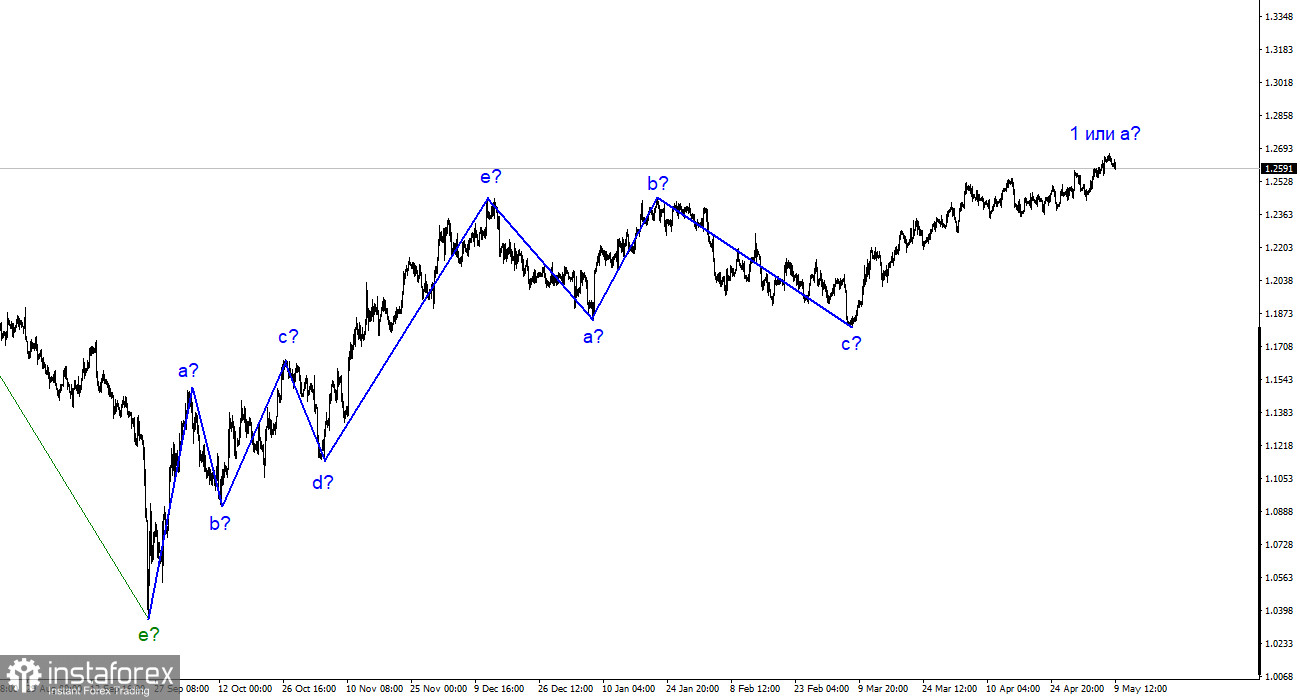
The wave analysis for the pound/dollar pair still looks complicated because it does not look like a classical corrective or impulse section of the trend. Since the current upward wave has exceeded the peak of the last wave b, the entire downward trend section consisting of waves a-b-c can be considered complete. Although it is very weakly similar to the trend section for the same period in the performance of the euro currency, both pairs have built downward three-wave sets of waves.
Therefore, forming a new upward trend section for the pound is ongoing. Since I can only single out one wave of the current scale starting on March 8th, there are good reasons to assume that forming a new trend section will take a long time. Both pairs should build similar wave formations. If this is the case, then wave 2 or b for the pound may be extended, and at the same time, a downward three-wave set can be built for the euro. Thus, I expect a deep wave b, as in the case of the formation of the previous three-wave set. Therefore, it is possible to expect a decline of the pair to the 1.1850 mark or slightly higher. However, at the moment, wave 1 or a continues to become more complicated.
The British currency overperformed the plan.
The pound/dollar pair rate declined by 25 basis points on Tuesday, which is too small for any serious conclusions. I have been waiting for a downward wave for the British currency for a long time, but the market keeps finding new reasons for purchases. Even in the past few days, if the pound grows, it grows stronger than the euro, and if it falls, it falls weaker than the euro. The euro could complete the formation of an ascending wave set around the peak of the last ascending trend section, while the British currency exceeded its similar peak. It is quite difficult to say why the demand for the pound is growing.
The Bank of England and the ECB are roughly in the same position regarding interest rates. Although inflation in the European Union is decreasing, and in the United Kingdom, it is virtually unchanged, both central banks will continue to raise rates, which few people in the market doubt. Nevertheless, demand for the euro is lower, and for the dollar – it is virtually nonexistent. The FOMC has a high probability of finishing the tightening process in May, which helps explain the latter point, but everything will depend on inflation.
Tomorrow, the Bank of England is likely to raise rates for the twelfth consecutive time, but the market may have already considered this change in monetary policy. Both pairs should start to decline. This week's news includes only the Bank of England meeting and US inflation. Both may increase demand for the dollar.
General conclusions.
The wave picture of the pound/dollar pair has long suggested the formation of a new downward wave. The wave analysis, as well as the news background, is somewhat unambiguous. I do not see factors supporting the British currency in the long term, and wave b could be very deep, but it has yet to start. A decline of the pair is more likely now, but the first wave of the ascending section continues to become more complicated. An unsuccessful attempt to break through the 1.2615 mark, corresponding to 127.2% on Fibonacci, will indicate the market's readiness for sales.
The picture is similar to the euro/dollar pair on the older wave scale, but some differences remain. The downward corrective section of the trend is complete, but at this time, the formation of a downward wave may begin. And this wave can turn out to be deep and extended, and the entire trend section – horizontal, like the previous one.
 English
English 
 Русский
Русский Bahasa Indonesia
Bahasa Indonesia Bahasa Malay
Bahasa Malay ไทย
ไทย Español
Español Deutsch
Deutsch Български
Български Français
Français Tiếng Việt
Tiếng Việt 中文
中文 বাংলা
বাংলা हिन्दी
हिन्दी Čeština
Čeština Українська
Українська Română
Română


